#CulturallyResponsiveTeaching
Explore tagged Tumblr posts
Text
Why Libraries Now Need a Curriculum in Schools: Turning Shelves into Systems of Learning
📚
The Changing Face of the School Library
There was a time when a school library was simply a quiet space with rows of books, a helpful librarian, and the occasional class visit. It was where students came to complete homework, research a project, or maybe read a story during free time. But today, education is evolving. Information is no longer scarce—it's abundant, confusing, and often unreliable. In this new world, school libraries are no longer just storehouses of books. They are emerging as learning laboratories—and to fulfill this role effectively, they need a curriculum.
A library curriculum is not about transforming the library into another classroom. It's about structuring learning experiences that equip students with skills that span beyond textbooks—skills like information literacy, digital responsibility, inquiry-based thinking, and a love for reading. These are essential in the 21st-century world, and they don’t fit neatly into any one subject. That’s why the library must become their home.
From Borrowing Books to Building Knowledge
When we think of a curriculum, we often imagine math formulas or grammar rules. But a library curriculum is different. It is flexible, interdisciplinary, and often student-led. It starts with a simple idea: that every student should learn how to access, evaluate, and use information wisely. That means learning to question, to analyze, to cite sources, and to build understanding from a wide range of materials.
With a structured library curriculum, librarians can introduce lessons at each grade level—on how to do real research, how to create bibliographies, how to identify fake news, how to navigate databases, and how to stay safe online. These are no longer optional skills; they are survival tools in a digital-first world.
A Compass for Critical Thinking
Imagine a student who can browse five different articles on a topic, evaluate their credibility, identify bias, and form an informed opinion. That’s the kind of learner schools need to cultivate. But it doesn't happen by accident—it takes guided practice. A curriculum offers the librarian a pathway to build those skills gradually and meaningfully.
Moreover, as AI tools become more accessible, students must learn to distinguish between generated content and original sources. They need to learn not just to find answers, but to ask better questions. The library becomes the perfect space for this training, and the curriculum becomes the compass.
Reading for Pleasure—and Purpose
Reading is at the heart of the library. But left to chance, it’s easy for reading to be overshadowed by exams and screen time. A curriculum helps embed reading for pleasure into the school culture. It allows librarians to design reading programs, author studies, reading challenges, genre explorations, and student book talks throughout the year—aligned with developmental needs.
When reading is celebrated regularly and systematically, it becomes more than a habit. It becomes part of a student’s identity. A library curriculum ensures that reading doesn’t fade into the background—it becomes a lively conversation between students, books, and ideas.
Collaboration with Classrooms
One of the biggest benefits of having a structured library curriculum is that it opens doors for collaboration with teachers. A history teacher working on a research project can align with the librarian’s curriculum on referencing and citation. A science teacher discussing data can invite the librarian to speak about digital sources and ethical research.
This connection ensures that the library is not isolated from the academic pulse of the school. Instead, it becomes an interdisciplinary partner—bringing information skills into every subject area in a seamless, supportive way.
Giving Students Agency
One of the most exciting outcomes of a library curriculum is how it helps students feel ownership of their learning. When students help plan book displays, contribute to library newsletters, or run peer reading clubs, they aren’t just learning—they’re leading. They begin to see the library as their space, not just the school’s.
The curriculum can include student-led activities, digital portfolios, reading journals, and collaborative research. This agency deepens their connection to knowledge and makes them more engaged learners.
Professional Recognition for Librarians
Librarians often work quietly behind the scenes, yet they play a powerful role in shaping students' intellectual lives. A curriculum gives librarians the visibility and voice they deserve. With structured goals and outcomes, librarians can now document their impact, track student progress, and present data to school leadership.
It transforms their role from resource managers to instructional leaders. They are no longer optional support staff—they are essential educators, building skills that cut across all disciplines and all stages of schooling.
Supporting Equity and Access
In many schools, especially those in under-resourced areas, the library may be the only place where students can explore topics freely, access the internet, or discover books that reflect their culture and language. A library curriculum can ensure that every child—regardless of background—gets exposure to inclusive stories, relevant research tools, and digital access.
By setting intentional reading lists, targeted support sessions, and culturally responsive practices, librarians can close gaps in literacy, confidence, and comprehension. The curriculum becomes a tool not just for teaching, but for equity.
Embracing the Future with Confidence
Education is changing rapidly. From AI-generated essays to virtual reality classrooms, the future of learning is already knocking at our door. Libraries, once seen as relics of the past, are uniquely positioned to lead this transition. But to do that, they need direction—a roadmap for how to engage students meaningfully in a new world of knowledge.
A library curriculum provides that roadmap. It prepares students not just for tests, but for life—for jobs that haven’t been invented, for challenges we can't yet predict, and for a world that will demand clarity, creativity, and collaboration.
The Final Word: Not a Restriction, But a Revolution
Some fear that introducing a curriculum will restrict the free-flowing nature of the library. But a good curriculum isn’t about rules—it’s about rhythm. It offers structure without stiffness, goals without rigidity. It allows librarians to build learning experiences that are intentional, impactful, and inspiring.
Libraries with a curriculum are not losing their soul. They are finding their full strength.
#Education#21stCenturySkills#FutureOfEducation#LearningInTheDigitalAge#EducationalInnovation#InformationLiteracy#DigitalLiteracy#CriticalThinking#InquiryBasedLearning#ReadingForPleasure#StudentAgency#TeacherCollaboration#InterdisciplinaryLearning#LearningCommunities#StudentLedLearning#📖 Reading & Literacy#ReadingCulture#LibraryLove#ReadingRevolution#BookLovers#ReadMoreBooks#🌍 Equity & Access#EquityInEducation#InclusiveEducation#CulturallyResponsiveTeaching#AccessToInformation#EducationalEquity#✨ Inspiration & Vision#EducationalLeadership#EmpoweredLearning
1 note
·
View note
Text
How Teachers Can Foster Cultural Sensitivity in the Classroom
How Teachers Can Foster Cultural Sensitivity in the Classroom - It is the goal of educators to create classrooms that are equitable and just environments. Any and all children are deserving of a place at the table. Diversity in terms of race, language, culture, backgrounds, and abilities ought to be respected within the culture of the school. It is through sharing their variety with one another and with the world that teachers are able to learn and inspire their students. Children have the opportunity to interact with one another and gain knowledge from one another when they participate in group activities. Diverse learning styles can be effectively addressed through the use of multimedia.

The teachers are able to better support the children's learning styles when they are aware of the backgrounds of the children who are enrolled in their classrooms. The knowledge and support base for teachers is expanding as a result of the increasing diversity that is occurring in schools and classrooms. Both between the family and the school, as well as between the school and the community, teachers serve as bridges. A number of educational theorists have identified cultural sensitivity, experiences, and content that is pertinent to history as their primary areas of attention. The concept of multiple intelligences is supported by the knowledge that there are various types of intelligence and abilities.
The concepts and questions that are a part of critical theory have the potential to assist students in developing an understanding of social, political, and economic contradictions, as well as to urge them to take action against the repressive aspects of their existence. It is beneficial to provide information in a number of different languages. The adjustments that have been made in classrooms throughout the years suggest that a greater number of children appear to learn in a different manner, speak a variety of languages, have more complicated emotional needs, and have a greater number of parents who come from a variety of cultural backgrounds than was the case in the past. It is critical that teachers enlist the participation of all of their pupils in educational activities. It is possible to improve postschool outcomes by putting greater emphasis on the necessity of planning transition-long courses of study.

Building Inclusive Classrooms Through Cultural Understanding
A significant number of today's classes are filled with children who come from a wide range of racial, ethnic, and cultural backgrounds. It is possible for a teacher to function from a substantially different cultural schema than many of his or her students when the instructor comes from a different culture, race, or ethnic background than the majority of the students in the classroom. There is a possibility that the behaviour that the teacher considers to be culturally suitable may be quite different from the behaviour that is thought to be acceptable in the culture of the student. In the event that this mismatch is not rectified, the cultural misunderstanding(s) may result in relationship dynamics that are considered to be unpleasant. On the other hand, the student might think of the teacher as being insensitive, demanding, or even cruel. The teacher might perceive the student to be rude, unmotivated, or even a behaviour issue. These misunderstandings have the potential to result in awkward circumstances involving classroom management and an overall negative atmosphere in the classroom.
The term "cultural sensitivity" refers to the awareness of and willingness to accommodate variances in cultural norms. Understanding and respecting the fact that not all cultures share the same customs, beliefs, and traditions is an essential component of cultural sensitivity. It denotes a knowledge of and respect for the many different perspectives that exist with regard to communication, behaviour, emotional expression, and interaction. In addition to this, it entails having an awareness of how expectations and standards impact the dynamics that exist within individual student-teacher relationships as well as the majority of human interactions that take place within the classroom setting. These elements have an effect on the capacity of both students and teachers to articulate their thoughts and feelings, as well as their ideas and opinions, regarding the events that are taking place in the classroom in a manner that is constructive and positive. The degree to which each of them is able to perceive the communication and interaction that occurs between the other person is a factor that contributes to their overall impressions of the relationship, as well as how each of them processes events that take place in and are associated with the classroom.

Strategies for Promoting Cultural Awareness in Education
When it comes to bringing diversity concerns beyond cultural sensitivity and into practical work on the objectives of the course, it is essential to have a solid understanding of the composition of your classroom environment. As an illustration, how will the various approaches to learning be taken into consideration while the materials are being designed? It is possible for educators to take a moment to reflect on the consequences that the different types of schools have for their classrooms. To what extent do the pupils share experiences that they can draw upon? Is it possible for one student to be able to describe a Chinese New Year celebration in Malaysia, and for other students to experience it?
Students who have attended a university foreign language academy and those who have attended private schools may have experiences that are comparable to one another. On the other hand, students who have attended karaoke parlours and petrol stations are likely to have experiences that are similar to one another. Will there be significant distinctions between the pupils who come from large cities and those who come from rural towns? Do pupils have the ability to learn from and teach one another? If you want to ask students these questions, the best time to do so is on the first day of class; however, it is possible that you will need to revisit them later on in the semester.

Language and individual learning styles are two domains that exhibit variation. It should come as no surprise that there is a wide variety of English proficiency among students who come from more than one linguistic background attending the same class. These can be cultivated by the use of visuals, demonstrations, and role play, as well as through group work, peer teaching, individualising instruction for learners with lower levels of proficiency, and employing peer teaching. It may also be beneficial to group students who speak the same native language together; however, it is important to keep in mind the time constraints that are associated with group work and to rotate the assignment of groups if it becomes required. One of the most significant objectives is to assist in achieving equal participation inside the classroom.
#CulturalSensitivity#InclusiveEducation#DiverseClassroom#TeacherTips#EquityInEducation#CulturallyResponsiveTeaching#ClassroomCulture#TeachDiversity#EducationMatters#StudentSuccess
0 notes
Text
Diary of an Aspiring Anti-Racist STEM Educator
Like many people in the world, I’ve found myself deeply moved by events of this summer and inspired to do some things differently than I have in the past. I’ve proudly said “Black lives matter” for years since the movement began; I became an educator; I’ve studied Culturally Responsive teaching; I regularly engage in conversations about race; I am a biracial black woman. I felt like I was checking so many boxes, but somehow it didn’t seem like enough. I had work to do, I knew. But I didn’t know how much until I started digging in.
A friend and fellow educator sent me information about a professional development on anti-racist education, and I sent it to my principal and got my school to pay for it. For pre-work, we were asked to read Tema Okun’s “White Supremacy Culture” and reflect on ways that we perpetuate white supremacy. I’d read it a few years ago, but it didn’t sit with me the way it sat with me this time. I hadn’t read it checking off boxes of things I do and things my school asks me to do daily the way I did this time. Perfectionism- check- something I’ve worked on un-learning in therapy; sense of urgency- check- did we really have a professional development day if we didn’t hear “sense of urgency” 30 times?; defensiveness- check- I don’t like changing my plans, so I’ll argue to support them, and the powers that be in my school are even worse... Every single feature was ingrained in me, in the power structures that exist at work, and in the power structures that exist in our world. I spent some time in this powerful workshop trying to learn ways to dismantle this culture, starting with dismantling it within myself and within my sphere of influence. And I made a commitment to continue to do it in every way I can, even when it’s hard, because it’s going to be hard. So, okay, I perpetuate white supremacy culture- let’s work on that.
Then I read Ibram X. Kendi’s How to be an Antiracist, which is mandatory reading for every adult who believes our world is not the way it should be. It was so powerful because it challenges the idea that someone could be “not racist” (spoiler alert: Kendi says there is no neutrality; you’re either racist or anti-racist, and I agree.). And it challenged my very commonly-held belief that a person of color cannot be racist because our race is not the privileged one and does not hold power. Kendi points out how ridiculous this is to suggest that people of color in positions of power do not hold power. And I know I certainly have power. Year after year, I get between 40 and 50 young black children to influence for several hours of a day, 5 days a week, 10 months of the year. My policies, my decisions, my teaching style impacts these children for the rest of their life, whether we choose to acknowledge it or not. And here I’ve spent time thinking I can’t be racist. No, I have power, and I can do racist things and have racist policies. And I have. So, okay, I have racist policies- let’s work on that.
This blog will be about my journey to be an anti-racist educator, even as I teach math and science. I will fail in places; I will continue to perpetuate white supremacy culture, and I will do racist things because it’s the culture I was raised in and the environment I continue to live and work in. But I will not be satisfied with that, and I will work to acknowledge my shortcomings and overcome them. I hope my transparency inspires someone else to do the work and my changes helps create a new generation of young folks better than mine.
Anti-racist Professional Development: https://culturallyresponsiveleadership.com/category/culturally-responsive-leadership/
Tema Okun’s “White Supremacy Culture:” https://www.dismantlingracism.org/uploads/4/3/5/7/43579015/okun_-_white_sup_culture.pdf
#anti-racism#anti-racist#educator#education#stem#math#teacher#teaching#culturallyresponsiveteaching#crt#blm#blacklivesmatter#blackstudentsmatter
1 note
·
View note
Text
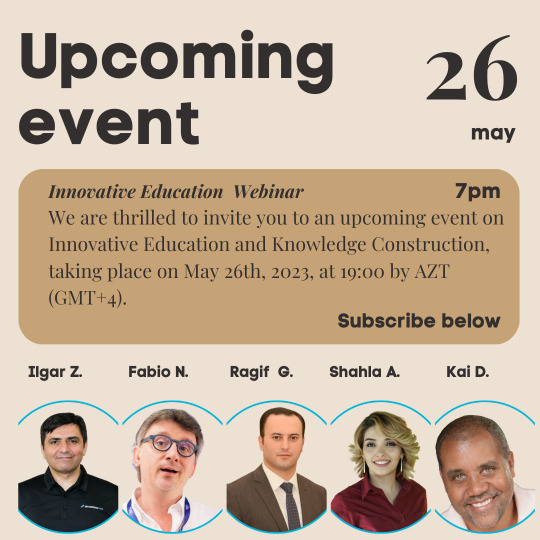
#Technologyineducation#Onlinelearning#Activelearning#Gamificationineducation#Projectbasedlearning#Personalizedlearning#Flippedclassroom#Blendedlearning#Collaborativelearning#Inquirybasedlearning#Experientiallearning#Multimodallearning#Criticalthinking#Creativityandinnovation#STEMeducation#Entrepreneurshipeducation#Globaleducation#Socialmotionallearning#Culturallyresponsiveteaching#Inclusiveeducation#greeneducation#educators#students#education#learning#community#opportunity#growth#share#future
0 notes
Photo

(via Teaching Tuesdays: CRT: Culturally Responsive Teaching)
https://renminds.org/2019/11/19/teaching-tuesdays-crt-culturally-responsive-teaching/
1 note
·
View note
Text
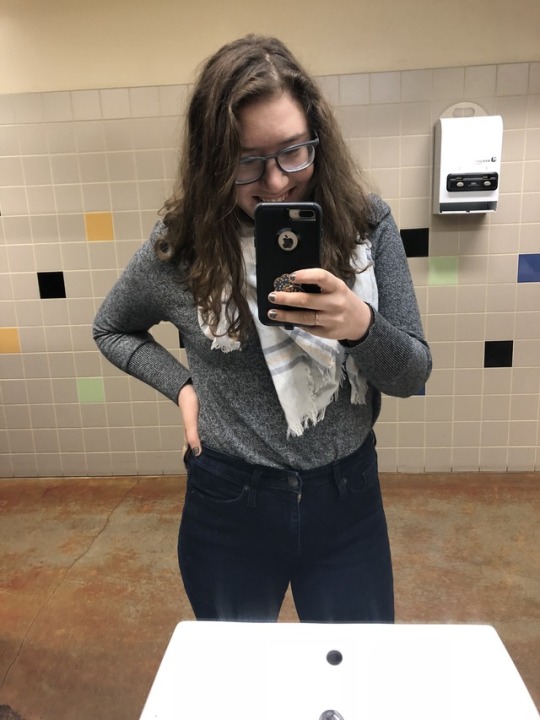
We’re trying to solve a societal problem IN A MIDDLE SCHOOL.
2 notes
·
View notes
Text
Malcinia Conley

Join My Black City in Celebrating and Supporting Malcinia Conley. We Shine Brighter Together. #MyBlackCity https://myblackcity.org/malcinia-conley/?feed_id=10392 >> Language Arts Teacher at Collegiate Prep Academy >> My role is a conduit to uncover the natural talents, prior knowledge, and intellectual richness of Students of Color. Through the use of emancipatory texts grounded in social justice, I connect with students authentically. The students know that I care and will show up for them.
#Education#BlackHistory#CollegiatePrepAcademy#CommunityCollaboration#CulturallyResponsiveTeaching#LanguageArts
0 notes
Text
ReWind: A conversation about CONSCIOUS EDUCATION
ReWind: A conversation about CONSCIOUS EDUCATION
Salandra Grice is a teacher-educator, the author of the book The Conscious Educator: Becoming Culturally Responsive Teachers and Schools, and the founder of Conscious Education Consulting, LLC. Conscious Education Consulting is a professional development provider for teachers and schools in culturally responsive, equity-based, and anti-racist/anti-bias teaching practices. Specializing in…
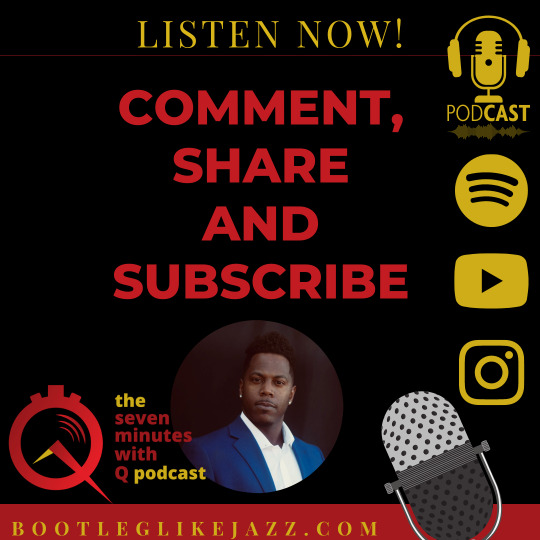
View On WordPress
#blm#consciouseducation#culturallyresponsiveschools#culturallyresponsiveteaching#education#equity#podcastepisodes#podcasthost#podcasts#publicschools#socialjustice#teacherhelpingteachers#teachers
0 notes
Photo

𝒥𝓊𝓈𝓉 𝒾𝓃 𝒸𝒶𝓈𝑒 𝒶𝓃𝓎𝒷𝑜𝒹𝓎 𝓃𝑒𝑒𝒹𝑒𝒹 𝓉𝑜 𝒽𝑒𝒶𝓇 𝓉𝒽𝒾𝓈 𝓉𝑜𝒹𝒶𝓎... 📕ℍ𝕖𝕣𝕠𝕖𝕤 𝔻𝕠𝕟’𝕥 𝕎𝕖𝕒𝕣 ℂ𝕒𝕡𝕖𝕤 by Antron Sykes 𝗣𝗮𝗽𝗲𝗿𝗯𝗮𝗰𝗸/𝗲𝗯𝗼𝗼𝗸 𝗮𝘃𝗮𝗶𝗹𝗮𝗯𝗹𝗲 𝗻𝗼𝘄 𝗼𝗻 𝗔𝗺𝗮𝘇𝗼𝗻!📕 #MyHeroesDontWearCapes #antronsykes #STAYTOONED #Art #weneeddiversebooks #digitalart #procreate #blacksuperhero #TRONTOONZ #BLACKART #blackartist #TOONIN #frontlineworkers #MyHeroes #BlackAuthor #pandemic #essentialworkers #blackillustrators #culturallyresponsiveteaching #blacklibrary #blackchildrensbooks #blackchildren #blackmagic #blackexcellence #iwrotemywayout #scbwi https://www.instagram.com/p/CMwmPahF370/?igshid=d8xbvecccyw2
#myheroesdontwearcapes#antronsykes#staytooned#art#weneeddiversebooks#digitalart#procreate#blacksuperhero#trontoonz#blackart#blackartist#toonin#frontlineworkers#myheroes#blackauthor#pandemic#essentialworkers#blackillustrators#culturallyresponsiveteaching#blacklibrary#blackchildrensbooks#blackchildren#blackmagic#blackexcellence#iwrotemywayout#scbwi
0 notes
Photo
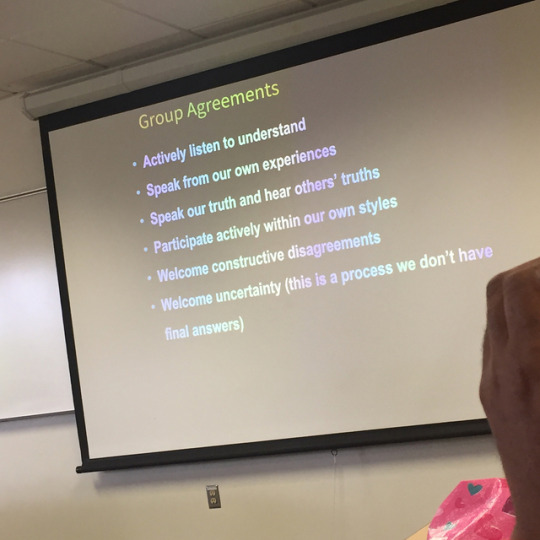
#culturallyresponsiveteaching summit @ #pcc (at PCC Cascade Campus)
1 note
·
View note
Photo

Trivia is so much fun. Making another one. 😉 . . . @mr.maqsood . . . #culturallyresponsiveteaching #teaching #teachingtips #wholebrainteaching #iloveteaching #buddhateachings #primaryteaching #teachingyoga #teachingideas #teachingenglish #englishlanguageteaching #teachingisfun #teachingmensfashion #teachingkids #teachings #englishteaching #teachingart #joyceteaching #teaching🔥 #teachingquotes #teaching_english #teachingresources https://www.instagram.com/p/B2nQ4Q8BkKG/?igshid=1n9h9vd5ouqct
#culturallyresponsiveteaching#teaching#teachingtips#wholebrainteaching#iloveteaching#buddhateachings#primaryteaching#teachingyoga#teachingideas#teachingenglish#englishlanguageteaching#teachingisfun#teachingmensfashion#teachingkids#teachings#englishteaching#teachingart#joyceteaching#teaching🔥#teachingquotes#teaching_english#teachingresources
0 notes
Link
1 note
·
View note
Photo
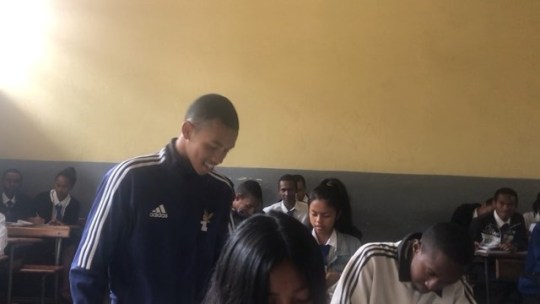
#Questions & #Answers for a #large #class #protocol 1. Students ask a series of questions to a teacher/ guest. 2. All the other students listen and write down the questions. 3. As the teacher answers those questions, students can write a brief response from what they heard. 4. The teacher can also write down and number the main concept for each question. 5. Afterwards, students practice reviewing the copied questions and summarizing the reported speech of what they heard in pairs. This is an activity for the 4 skills of reading, listening, writing and speaking. Finally, new words can be reviewed using a call and response #protocol called #word #sandwiches to #review #vocabulary Teaching with limited resources in #Madagascar @mobileteacher #teacher #training #creative #group #assessment #day164 #culturallyresponsiveteaching @elprograms #pedagogyoftheoppressed #paolofriere #inspired #teachersofinstagram #teachersfollowteachers #teachershare #teacherlife🍎 #teacher #teachabroad #whatsoutsidemywindow (at Tananarive, Antananarivo, Madagascar) https://www.instagram.com/p/By6Uk2AgWEd/?igshid=1x45z5lvum0pf
#questions#answers#large#class#protocol#word#sandwiches#review#vocabulary#madagascar#teacher#training#creative#group#assessment#day164#culturallyresponsiveteaching#pedagogyoftheoppressed#paolofriere#inspired#teachersofinstagram#teachersfollowteachers#teachershare#teacherlife🍎#teachabroad#whatsoutsidemywindow
0 notes
Photo

Ideas for building strong K-12 teaching/learning relationships online @LearningwithKL @achievethecore bit.ly/2Y7TRGB
0 notes
Photo

I̶ ̶w̶r̶o̶t̶e̶ ̶m̶y̶ ̶w̶a̶y̶ ̶o̶u̶t̶.̶.̶.̶🖋 𝘞𝘪𝘵𝘩 𝘩𝘪𝘴 𝘢𝘳𝘵, 𝘛𝘳𝘰𝘯 𝘩𝘰𝘱𝘦𝘴 𝘵𝘰 𝘶𝘱𝘭𝘪𝘧𝘵 𝘦𝘷𝘦𝘳𝘺𝘥𝘢𝘺 𝘱𝘦𝘰𝘱𝘭𝘦, 𝘢𝘴 𝘸𝘦𝘭𝘭 𝘢𝘴 𝘪𝘯𝘴𝘱𝘪𝘳𝘦 𝘢 𝘨𝘦𝘯𝘦𝘳𝘢𝘵𝘪𝘰𝘯 𝘰𝘧 𝘺𝘰𝘶𝘵𝘩 𝘵𝘰 𝘧𝘦𝘦𝘭 𝘦𝘮𝘱𝘰𝘸𝘦𝘳𝘦𝘥 𝘢𝘯𝘥 𝘴𝘦𝘦 𝘵𝘩𝘦𝘮𝘴𝘦𝘭𝘷𝘦𝘴 𝘳𝘦𝘱𝘳𝘦𝘴𝘦𝘯𝘵𝘦𝘥 𝘵𝘩𝘳𝘰𝘶𝘨𝘩 𝘩𝘪𝘴 𝘴𝘵𝘰𝘳𝘪𝘦𝘴. Whether you are a mother, father, little boy, or girl, this book will remind readers that there are heroes all around us, and none of them wear capes! 📕ℍ𝕖𝕣𝕠𝕖𝕤 𝔻𝕠𝕟’𝕥 𝕎𝕖𝕒𝕣 ℂ𝕒𝕡𝕖𝕤 by Antron Sykes 𝗣𝗮𝗽𝗲𝗿𝗯𝗮𝗰𝗸/𝗲𝗯𝗼𝗼𝗸 𝗮𝘃𝗮𝗶𝗹𝗮𝗯𝗹𝗲 𝗻𝗼𝘄 𝗼𝗻 𝗔𝗺𝗮𝘇𝗼𝗻.com!📕 #MyHeroesDontWearCapes #STAYTOONED #Art #weneeddiversebooks #digitalart #procreate #blacksuperhero #TRONTOONZ #BLACKART #blackartist #TOONIN #frontlineworkers #MyHeroes #BlackAuthor #pandemic #essentialworkers #blackillustrators #culturallyresponsiveteaching #blacklibrary #blackchildrensbooks #blackchildren #blackmagic #blackexcellence #iwrotemywayout #scbwi https://www.instagram.com/p/CMwlIQ9lai4/?igshid=1ae60kbyspbp4
#myheroesdontwearcapes#staytooned#art#weneeddiversebooks#digitalart#procreate#blacksuperhero#trontoonz#blackart#blackartist#toonin#frontlineworkers#myheroes#blackauthor#pandemic#essentialworkers#blackillustrators#culturallyresponsiveteaching#blacklibrary#blackchildrensbooks#blackchildren#blackmagic#blackexcellence#iwrotemywayout#scbwi
0 notes
Photo

#mashupThatshit #culturallyresponsiveteaching #criticalracetheory #hiphop #antiracist https://www.instagram.com/p/CA_RGe0Fzdi0smkBE1l5FS6yPLLfKr6ONXEtKM0/?igshid=dflo5h0k9bob
0 notes